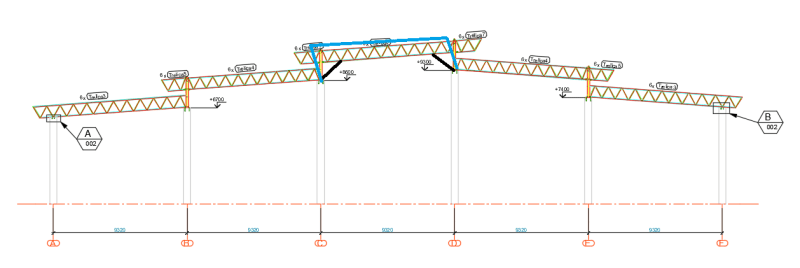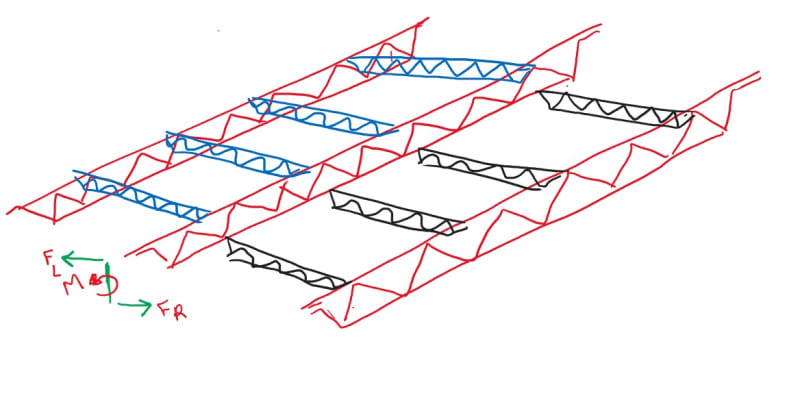Hello,
I'm designing a Steel Roof for a Gymnasium and the geometry required by the architect is a bit unusual. The Structure consist of 4 Main Trusses(32.5m Span and 9.32m tributary area) supporting secondary trusses. The problem arises because the roof has 5 different slopes( 2 towards one side and 3 towards the other). See the Elevation.

Because the different slopes, the upper chord of the exterior Main Trusses is connected do the Lower chord of the central trusses. I'm worried about a torsional instability of the central main trusses in which they buckle together like described by the blue lines in the figure below. So I decided to introduce large Fly Braces(Black Lines).

I would like to know if someone here has had some similar situation and if there's another solution more adequate than the fly braces.
PS: Because the length of the fly braces i'd use channel sections and not angles.

Thanks in advance.
I'm designing a Steel Roof for a Gymnasium and the geometry required by the architect is a bit unusual. The Structure consist of 4 Main Trusses(32.5m Span and 9.32m tributary area) supporting secondary trusses. The problem arises because the roof has 5 different slopes( 2 towards one side and 3 towards the other). See the Elevation.

Because the different slopes, the upper chord of the exterior Main Trusses is connected do the Lower chord of the central trusses. I'm worried about a torsional instability of the central main trusses in which they buckle together like described by the blue lines in the figure below. So I decided to introduce large Fly Braces(Black Lines).

I would like to know if someone here has had some similar situation and if there's another solution more adequate than the fly braces.
PS: Because the length of the fly braces i'd use channel sections and not angles.

Thanks in advance.

